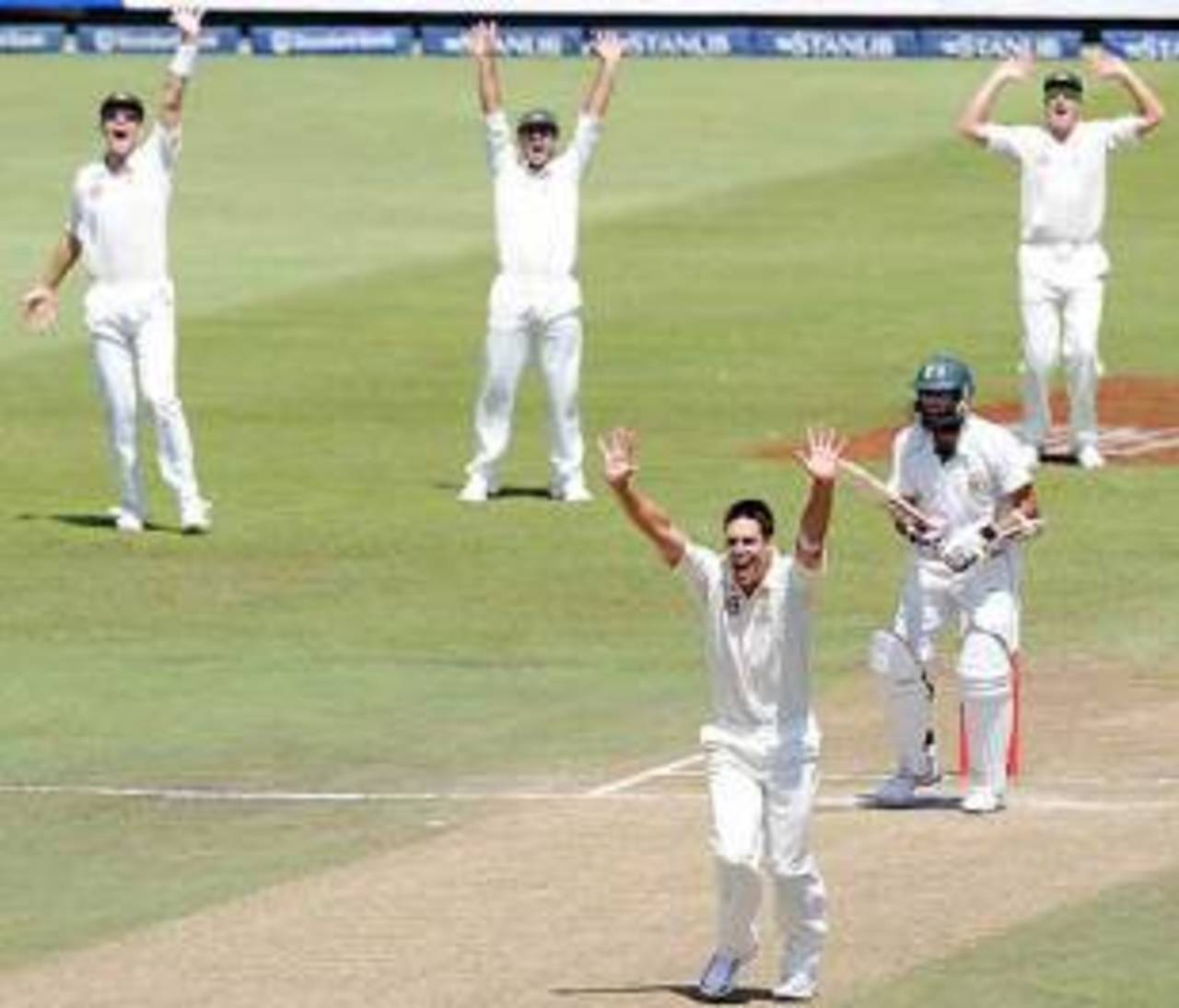The fire that was soothing
Cricket is the most cerebral of field sports, but a fast bowler letting rip on a responsive surface is it's animal moment, and in a sublime sense
Sambit Bal
25-Feb-2013

Getty Images
Shane Warne remains the bowler I have enjoyed watching the most, but there isn't more thrilling sight in cricket than a fast bowler in full pelt. Cricket is the most cerebral of field sports, but a fast bowler letting rip on a responsive surface is its animal moment, and in a sublime sense.
So after all those depressing days, finally some cheer. A double dose in fact. Two sensational sessions of pure fast bowling, ten wickets, two men in the hospital, two more knocks on the head, and the pitch hasn't been declared dangerous yet. Has it all been a dream? After all, I did fall asleep on the sofa watching Paul Collingwood and Matt Prior squeeze single after single against that magical tweaking duo of Chris Gayle and Ryan Hinds.
So while watching normal business of Yuvraj Singh swatting sixes as if practising his bat swing, I have taken time to reconfirm on Cricinfo that the second day at Kingsmead did happen. Against the recent average of about four wickets a day, 13 wickets did fall in a whole day; and neither South Africa nor Australia employed a sweeper cover for their fast bowlers.
Dale Steyn and Mitchell Johnson are the fastest men in international cricket at the moment. They were also the leading wicket-takers last year. But Johnson had spent considerable time keeping the ball out of arm's reach as the Australians embraced the tactics of denial. It was a pitiable sight to watch a fast bowler bowl three to four feet outside the off stump, without a slip, and two men on the offside boundary. It was both an indictment of poor pitches and defeatist mindset.
But throughout the year Johnson had never lacked pace, stamina and enthusiasm. Invariably, he was the bowler Ricky Ponting turned to towards the end of a sapping day, and invariably Johnson hit 140 km in his first over. Steyn, of course, has been outstanding all year, bowling outswingers at a pace that made him unplayable on surfaces mildly responsive to his skills. To watch a pitch reward them was therapeutic.
It might turn out to be an exception, but still it was a restoration of faith, a reaffirmation that Test cricket was still the game's supreme form. The mind has grown numb with the number of centuries scored in the last few weeks: a triple for Younis Khan, two double-hundreds to Thilan Samaraweera, three hundreds each to Andrew Strauss and Ramnaresh Sarwan - but the innings that is likely to last in memory amid this senseless surge of runs is not even a hundred yet.
JP Duminy's calm and skilful batting on the second day of the Durban Test put Steyn's and Johnson's performances in perspective. Yes, the ball hurried off the pitch, and at times it kept low, but by no means was batting hazardous or run-scoring impossible. Days like yesterday are worth celebrating, they don't come often.
And a postscript just to keep us rooted in reality. This is from Siddhartha Vaidyanathan, currently in Chicago on study break from Cricinfo:
It was great to see Sachin Tendulkar today but it felt like watching a giant fighting in a boxing ring. These New Zealand grounds are so tiny that I wonder how a batting achievement at this AMI stadium can be compared with one at the MCG (Tendulkar, of course, can score runs on a crater in Mars so that's not the point here).
Shouldn't there be a call for a minimum ground size? As far as I see it, it's worse than a dead pitch. Here you see good balls taking the inside edge and flying for four (sometimes even six). And again, pitch preparation is not an exact science - the weather and soil composition are important. How difficult is it to set a minimum ground size?
I know 'It's the same for both teams'. I also know the theory that 'Everyone wants to see fours and sixes'. I even know 'It's important to have variety in cricket'. But something here doesn't seem right. Not only are we marginalising bowlers but these sort of grounds (and I'm including stadiums in India where the rope is brought in) we're doing the same to fielders.
Cricket is supposed to be a grand theatre. But isn't this more like a street play?
Sambit Bal is the editor of ESPNcricinfo